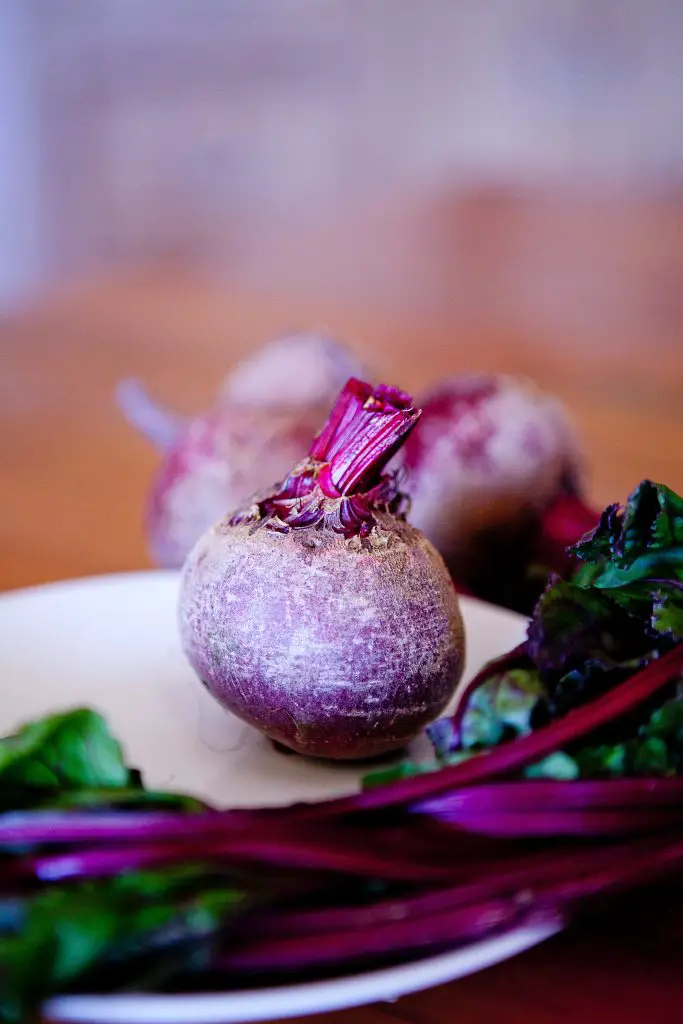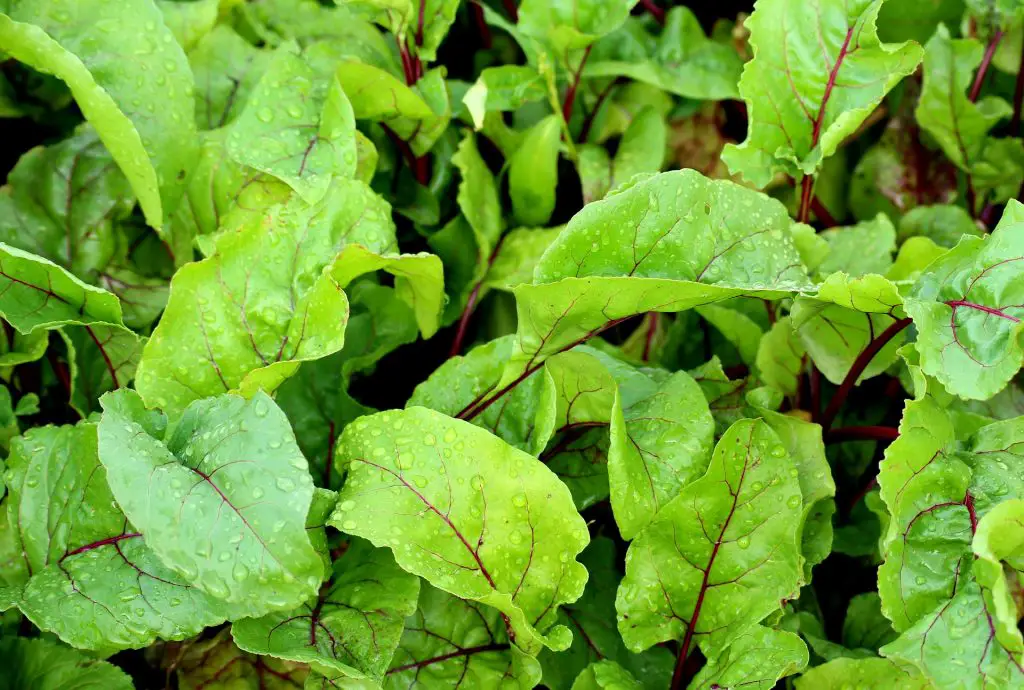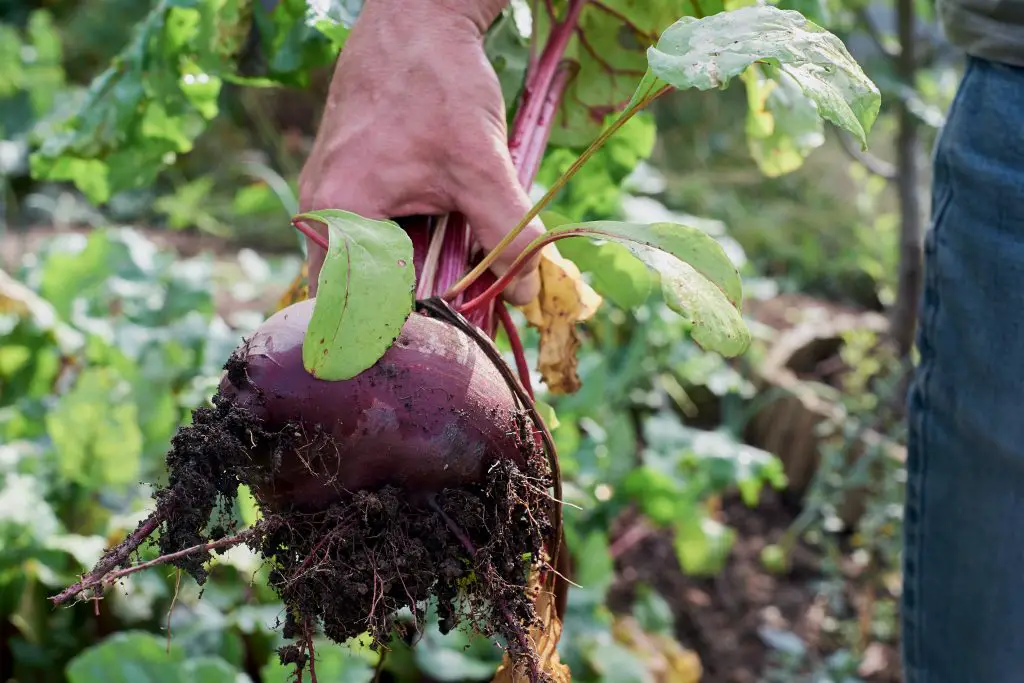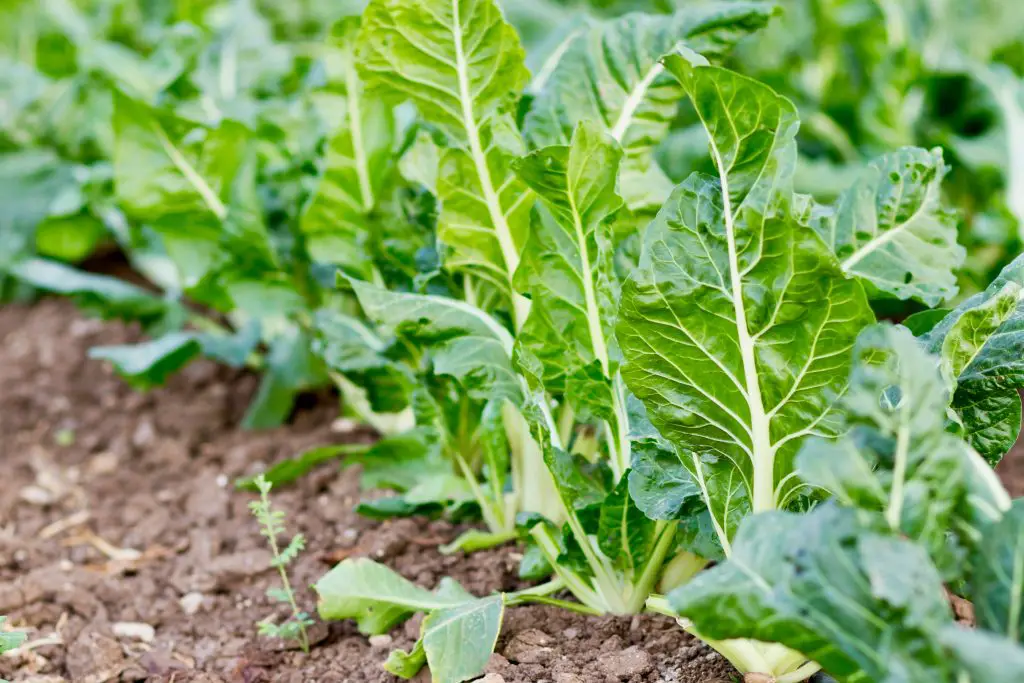Beets vs Beetroot: Are They The Same Thing? Beetroot is a popular vegetable that is widely cultivated around the world. Most varieties are purple in colour however, there are forms that are yellow in color. The vegetable is eaten fresh and cooked but is best known to being pickled. But is the beetroot the same as the a beet plant?
The terms beet and beetroot generally refer to the same species of vegetable, Beta vulgaris. The term beet is most commonly used in North America to describe the tap root of the beet plant which is widely referred to in the UK as the beetroot. However, within this species there is subspecies that contains a range of cultivars that are primarily grown for the leaves and have a small tap root. Thes cultivars are sometimes referred to as beet greens but are best known as Chard, Swiss Chard or Silverbeet.
In addition to these cultivars, the species also includes the sugar beets which are grown in countries with a temperate climates as an alternative source of sugar.

About Beetroot (Beet)
Beetroot is an extremely old vegetable that has been grown for thousands of years. There is evidence of the use of beetroot at the Saqqara pyramid at Thebes, Egypt, which dates back to around 3000BC and also evidence of the use of the vegetable in ancient Greece around 300BC.
The vegetable itself is thought to have been derived from the Sea beet which is native to Southern Europe. The vegetable was used in ancient times as a food and a medicine. The leaves of beetroot where used for binding and dressing wounds while the root was eaten as a laxative and a cure for fever, it was also throught to extend life.
However, the root that was used in acient times resembles a long thin carrot rather than to rounded root we know today. The larger roots did not appear until around the 16th century in Europe, however it took a further 200 years for the plant to become widely used in Central and Eastern European cusines.
In the Victorian times, beetroot began to be used as a dye in a number of different places which included wine and desserts, however, the familiar picked form of the beetroot became part of many peoples diet during and shortly after the second world war. During this period pickled beetroot became one of the most abundant vegetables and thus the pickled from became widely accepted as part of the western diet.

How To Grow Beets
The beet plant, in general, is an extremely easy plant to grow, as they germinate readily and are tolerant of a wide range of climatic conditions. The plants are tolerant of cold frosty conditions and a wide variety of soil types which allows the plant to be grown year-round in many areas provided that the winters are not too cold.
The beet plant will also tolerate relatively shady conditions which allows them to be grown in areas that many other vegetables cannot.
Additionally, Chard (silverbeet) is a prolific producer compared to other leafy greens such as spinach. I grow chard preferentially over other greens for this reason, and also the fact that the plant produces over such a long period. It is common for a chard plant to continue producing for 9 months or more.
The other common form of this species, Beetroot, is also productive as it can be harvested for its roots and leaves, though the volume of leaves that can be harvested from these cultivars is significantly lower. The root itself is best grown in the cooler months of the year as it can sit in the garden throughout the winter months in most climates. This ensures that the vegetable is available for most of the year.

Sowing Beet Seeds
Beet seeds can be sown either directly into garden beds or into the seed trays at any stage throughout the growing season. However, I recommend sowing beet seeds from early spring until late summer, the reason for this is that it allows time for the plant to reach a reasonable size prior to the arrival of cold weather. Sowing done in Autumn generally, won’t allow harvesting through the winter period as the plant has not reached a sufficient size and will not grow significantly through winter.
When sowing the seed I prefer to start the plants off in seed trays as it has several advantages over planting directly into the garden. The first advantage is that the seeds can be successfully germinated earlier in the season as trays can be kept indoors in a warm location.
However, if you live in a region with a really cold winters it may be worth investing in a heated propagation tray. Heated propagation trays make it easy to provide the ideal growing conditions for raising young seedlings because they provide a constant temperature and a humid conditions. To see the latest price on Amazon click the link.
When sowing the seeds it is recommend that a specific seed raising mixture be used as it is a sterile medium that is light, fluffy, and has good moisture retention. The seeds should be planted at a depth of around 0.5 inches (1 cm).
For chard (silverbeet) we generally recommend that 2 seeds per cell be planted to ensure that at least one plant germinates in the cell. However, for beetroot we recommend plant between 4 and 6 seeds in a cell. This technique of planting in custers is sometimes referred to as multisowing, and is a technique recommended by Charles Dowding.
Multi sowing beetroot is advantageous because it saves space in the seed tray as 150 plants can fit into a standard 30 cell seed tray. Secondly, transplanting the seedlings into the garden is much faster. The third benefit is that the clumps can be planted around 10 inches apart which enables a dutch hoe to be used to remove weeds which is much quicker than hand weeding.
The yields that can be achieved from multisowing is similiar to individual sowing provided that the number of plants in a clump is limited to no more than 5.
Once planted most beet plants will typically appear after 7 to 14 days and they will usually need to spend another 4 to 5 weeks in the trays before they can be planted out into the garden.

Transplanting And Caring For Seedlings In The Garden
Irrespective of the whether you are planting out chard or beetroot the plants should be spaced approximately 1 foot (30 cm). Ideally the plants should be planted in a sunny location, however, they will tolerate shadier locations. The soil should be rich, moist but free-draining soil that has plenty of organic matter. If your soil is sandy or heavy clay it may be necessary to add additional compost.
As beet seedlings are susceptible to attack from slugs and snails it is important to provide protection which can be done by sprinkling snail pallets around the plants. It is also advisable to apply a thick layer of organic mulch to help retain moisture and suppress weeds.
In terms of ongoing maintenance there is generally very little to do apart from ensuring that the plants remain moist by regularly watering them and removing any weeds that many compete with the beets.
However, if you live is a relatively cool climate it may be necessary to provide some protection from the winter weather. Beets are generally very hardy plant that can withstand temperatures of 25°F (-4°C) or even lower, however at these temperatures the plants will benefit from some winter protection which is usually done using a row cover.
If you do not currently own a row cover the one we would recommend is the Growsun Garden Tunnel Plant Cover because it is relatively tall and has hoops that can be anchored deeply into the ground which allows it to resist wind. The product is shown in the image below.

Harvesting Beets
The harvesting of chard can be done at any stage once the plant is around 6 to 8 inches tall. Chard is one of those plants that can take a little while to get going, however once it does it will produce profilically 6 to 12 months in most cases provided that the winters are not too cold.
When harvesting the plant it is advisable to remove the outer leaves of the plant as this will allow the inner leaves to continue to grow so that it is ready for the next harvest.
In the case of Beetroot both the leaves and roots can be harvested. The leaves of the beetroot are not as tender as the leaves of chard and need to be harvested when the plants are young. However, if you are intending on harvesting the roots later on it is important to only remove a few leaves to ensure that the plant can continue to photosynthesis. Removing too many leaves will affect the roots’ development.
The roots of the beetroot can be harvested once the plant reaches the size of a golf ball. To remove the plant from a clump it is best to twist the plant out rather than pull it as this will minimize the disturbance of the other roots in the clump.
The beetroots can be left in the ground for an extended period of time provided that the soil does not get too wet and soggy or the plant runs too seed. If there is a need to removed the beetroots from the garden they can be stored for months in damp sand.
